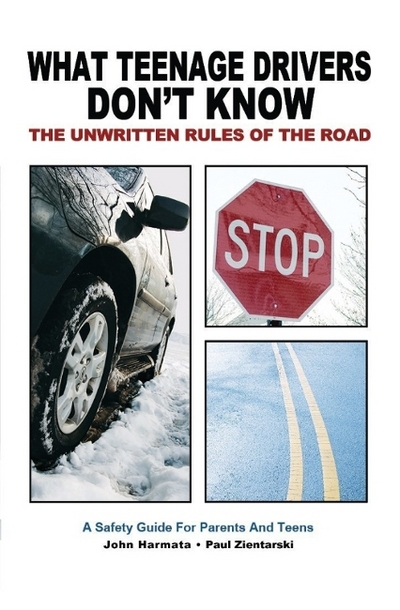Winter Is Here: Authors of "What Teenage Drivers Don't Know: Unwritten Rules of the Road" Share Cold Weather Driving Safety Tips
 |
NAPERVILLE, IL -- January 20, 2016: John Harmata and Paul Zientarski, authors of "What Teenage Drivers Don't Know: Unwritten Rules of the Road," understand that parents of young drivers have one more thing to worry about when snow begins to fly and icy cold grips the land. Along with the major driving holidays, bad weather contributes to a significant number of accidents on the nation's roadways. The lessons and insights Harmata and Zientarski share in their book are effective in any weather, but especially so in the tough conditions of winter.
"Snow and ice present some of the biggest challenges to any driver," says Harmata, "but taking the right precautions and following a few simple steps can keep even young drivers safe. Our book covers all aspects of being a safe, mindful driver, from trip planning to how to respond in an emergency."
Before the Trip
Preparation is everything when driving through bad weather like winter storms and frigid cold. A thorough maintenance inspection before leaving home can save lots of grief later. Teen drivers should learn how to check tire pressure and wear, fluid levels, heater, headlamps and brake lights. Preparation also means carefully planning one's route and leaving extra time so there's no rush.
"Don't leave home without a charged cell phone," adds Harmata, "and don't take a long journey without letting people know where you're going and when you expect to arrive."
Being prepared also means having the right tools on hand for a worst-case scenario, such as breaking down or being trapped by a blizzard. A well-stocked roadside emergency kit should include the following:
- Jumper Cables
- Flashlights
- Road Flares
- Shovel and Broom
- Blankets
- Water and Snacks
Safety on the Road
Seat belts are the single most important safety feature in a vehicle, but they're only effective when everyone wears them. On long trips, teen drivers should take regular breaks to stretch, get in touch with family, and change drivers if possible. Winter weather presents the most stressful and tiring driving conditions, so "marathon" sessions behind the wheel are not recommended for anyone.
Sometimes, not driving at all is the safest option. If a bad storm is on the way or ongoing, consider delaying or cancelling a trip. To that end, listen to local law news regarding road closures and other public advisories.
What to Do in an Emergency
Breaking down or getting stuck during a storm can be scary, but remembering some practical tips can help everyone be safe. The National Highway Traffic Safety Administration recommends staying with the vehicle and not exerting oneself. Orange safety triangles, bright patches of fabric on the antenna or windows, and road flares are all means of letting the authorities know that people are stuck in a vehicle and in need of assistance. Most importantly, never run a car's engine for long periods when it's not moving – carbon monoxide can build up to deadly levels inside the vehicle. Turn the car on only long enough to warm the cabin, and ensure the exhaust pipe is clear of snow.
About the Authors
John Harmata, business owner and entrepreneur, was born and raised in Chicago, Illinois. His concern for child safety has been a priority in life. Raising two children together with his wife, John has experienced the concern parents have for their children as they take those first steps toward independence and begin to drive. John, creator and lead author believes that "What Teenage Drivers Don't Know: The Unwritten Rules of the Road" will help protect our most valuable possessions – our children's lives.
Paul Zientarski has dedicated 40 years of his life to teaching students physical education, culminating his career as Department Chairman for Physical Education, Health, and Driver Education. As the Department Chairman for Driver Education, Paul's responsibilities included staff development, supervision, and film reviews for Simulator Systems, Inc.


